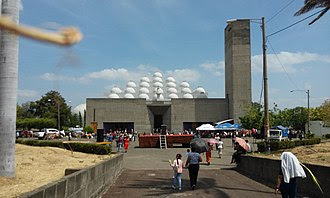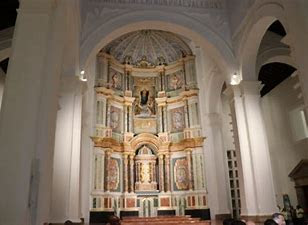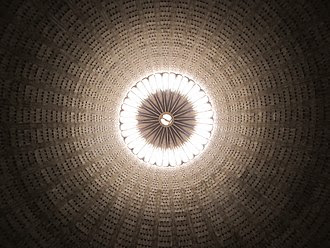Central America
This blog will discuss Costa Rica, El Salvador, Guatemala, Honduras, Nicaragua, and Panama. Central America was conquered by Spain in the 16th Century. Much of Central American declared independence in 1821 and became a republic in 1823, known as the Federal Republic of Central America or the United Provinces of Central America. The Republic consisted of what is now Costa Rica, El Salvador, Guatemala, Honduras, Nicaragua, and part of Mexico. The constituent states left the Republic beginning in 1838.
Costa Rica
Costa Rica was colonized by Spain in 1563 and joined the independent United Provinces of Central America in 1823. Costa Rica became its own nation in 1838. Spanish missionaries brought the Faith to Costa Rica.
About 72 percent of Costa Rica’s 5.1 million people are Catholic and 15 percent are Protestant. Ten percent claim no religion. Costa Rica has one ecclesiastic province: San Jose.
Province of San Jose
The province consists of Costa Rica. The Diocese of San Jose was established in 1850 and became the Metropolitan Archdiocese of San Jose in 1921.
The Cathedral of St. Joseph in San Jose was built in 1871 to replace a building destroyed by an earthquake. The Cathedral employs Greek Orthodox, Neoclassical, and Baroque styles. The interior has Spanish-tiled floors and a vaulted ceiling. The main altar has statues of cherubs and a wooden figure of Christ made in Guatemala. The Cathedral has a restored 19th Century pipe organ.
The first picture is from Pinterest and the others are from Wikipedia.
The Province has seven suffragan dioceses.
- The Diocese of Alajuela was created in 1921.
- The Diocese of San Isidro de El General was created in 1954.
- The Diocese of Tilaran-Liberia was created in 1961.
- The Diocese of Limon was established as an apostolic vicariate in 1921 and became a diocese in 1994.
- The Diocese of Ciudad Quesada was established in 1995.
- The Diocese of Puntarenas was created in 1998.
- The Diocese of Cartago was created in 2005.
El Salvador
The Spanish established San Salvador in 1525. El Salvador joined the independent United Provinces of Central America in 1823 and became its own nation in 1839. Spanish missionaries brought the Faith to El Salvador.
Half of El Salvador’s 6.5 million people are Catholic. Protestants account for 36 percent and 12 percent have no religion. El Salvador has one ecclesiastic province: San Salvador. In addition, there is a military diocese created in 1968.
Province of San Salvador
The province consists of El Salvador. The Diocese of San Salvador was established in 1842 and became the Metropolitan Archdiocese of San Salvador in 1913.
The Cathedral Basilica of the Holy Savior in San Salvador is the third cathedral. The first church was built in the 16th Century and was destroyed by an earthquake in 1873. Pope Gregory XVI designated this church as a minor basilica in 1846, four years after it became a cathedral. The second cathedral opened in 1888, but burned completely in 1951. Work on the current cathedral began in 1956, but it was not completed until 1999 due to the civil war in the 1980s. St. Oscar Romero is buried in the Cathedral. The main altar features an image of the Divine Savior donated by Charles V, the Holy Roman Emperor, in 1546. The altar is surrounded by eight paintings depicting the life of Christ by Andres Garcia Ibanez.
The Province has seven suffragan dioceses.
- The Diocese of San Miguel was created in 1913.
- The Diocese of Santa Ana was established in 1913.
- The Diocese of San Vincente was established in 1943.
- The Diocese of Santiago de Maria was created in 1954.
- The Diocese of Sonsonate was created in 1986.
- The Diocese of Zacatecoluca was created in 1987.
- The Diocese of Chalatenango was created in 1987.
Guatemala
Guatemala came under Spanish control beginning in 1519. Guatemala joined the independent United Provinces of Central America in 1823. Guatemala became an independent republic in 1847. Spanish missionaries brought the Faith to Costa Rica and the nation was once predominantly Catholic. In 1882, Guatemala’s president invited Protestant missionaries in an effort to reduce the influence of the Church. Only a few converts were made at that time, but many more were made starting in the 1950s with the work of Pentecostal missionaries from the United States.
Guatemala has 17 million people and 47 percent are Catholic, 41 percent are Protestant, and 8 percent claim no specific religion. Guatemala has two ecclesiastic provinces: Santiago de Guatemala and Los Altos, Quetzaltenango-Totonicapán. In addition, there are the following:
- The Apostolic Vicariate of El Peten covers the civil department of Peten. It was established as an apostolic administration in 1951 and became an apostolic vicariate in 1984. It is immediately subject to the Pope.
- The Apostolic Vicariate of Izabal covers the civil department of Izabal. It was established as an apostolic administration in 1968 and became an apostolic vicariate in 1988. It is immediately subject to the Pope.
Province of Santiago de Guatemala
The province consists of the civil departments of Alta Verapaz, Baja Verapaz, El Progreso, Escuintla, Guatemala, Jalapa, Jutiapa, Sacatepéquez, Santa Rosa, and Zacapa, in southeastern Guatemala. The Diocese of Guatemala was established in 1534 and became the Metropolitan Archdiocese of Guatemala in 1743. It acquired its current name in 2013.
Construction of the Primatial Metropolitan Cathedral of St. James in Guatemala City began in 1783 and the building was consecrated in 1815, although construction went on until 1871. The Neoclassical and Baroque cathedral has been damaged by earthquakes at least twice and has been restored. The stone church has a dome and two towers. The main altar is made of gold and Carrara marble. The façade has twelve large pillars with the names of thousands of victims of Guatemala’s civil unrest in the late 20th Century.
The first two pictures are from Flickr and the others from Wikipedia.
The Province has six suffragan dioceses.
- The Diocese of Vera Paz was created in 1561, suppressed in 1603, restored as an apostolic vicariate in 1921, and once again became a diocese in 1935.
- The Diocese of Jalapa was created in 1951.
- The Diocese of Zacapa was created in 1951.
- The Diocese of Escuintla was created as a territorial prelature in 1969 and became a diocese in 1994.
- The Diocese of Santa Rosa de Lima was established in 1996.
- The Diocese of San Francisco de Asis de Jutiapa was established in 2016.
I do not usually cover diocesan churches, but I will make an exception here. The Basilica of the Black Christ of Esquipulas is in Esquipulas in the Diocese of Zacapa. The Baroque church was completed in 1759 and is the largest Catholic church in Central America and southern Mexico. It has four bell towers and was declared a minor basilica by Pope John XXIII in 1961. Four and a half million pilgrims annually visit the Basilica to venerate the image of the Black Christ which was carved in 1594.
The first two pictures are from Flickr and the last from Wikipedia.
Province of Los Altos, Quetzaltenango-Totonicapán
The province consists of the civil departments of Chimaltenango, Huehuetenango, Quetzaltenango, Quiché, Retalhuleu, San Marcos, Sololá, Suchitepéquez, and Totonicapán, in southwestern Guatemala. The Diocese of Quetzaltenango, Los Altos was established in 1921 and became a metropolitan archdiocese under its current name in 1996.
Holy Spirit Cathedral in Quetzaltenango was originally built in the 1530s, although the Baroque façade was built in the 17th Century. Much of the church was rebuilt in the late 19th Century, except for the façade, bell tower, and a chapel dedicated to Our Lady of the Rosary. Much of the new construction was destroyed by an earthquake in 1902 and was rebuilt in a neoclassical style in the 1930s. The Cathedral contains two images that are important to the people of the region: one of Jesus as the Divine Just Judge and one of Mary as the Virgin of the Rosary.
The top picture is from Flickr and the other two from Wikipedia.
The Co-Cathedral of St. Michael the Archangel is in Totonicapan.
The second picture is from Panaramio.
The Province has five suffragan dioceses.
- The Diocese of San Marco was established in 1951.
- The Diocese of Solola-Chimaltenango was established in 1951 and acquired its current name in 1996.
- The Diocese of Quiche was created in 1967.
- The Diocese of Huehuetenango was created as a territorial prelature in 1961 and became a diocese in 1967.
- The Diocese of Suchitepequez-Retalhuleu was created in 1996.
Honduras
Honduras became a Spanish colony in 1524, although it took several years before the Spanish controlled all of Honduras. Honduras joined the independent United Provinces of Central America in 1823 and became its own nation in 1838. Spanish missionaries brought the Faith to Honduras.
Honduras’ 9.2 million people are 46 percent Catholic and 41 percent Protestant. Ten percent profess no religion. Honduras has one ecclesiastic province: Tegucigalpa.
Province of Tegucigalpa
The province consists of southern Honduras. The Metropolitan Archdiocese of Tegucigalpa was established in 1916.
The Cathedral of St. Michael the Archangel in Tegucigalpa was built between 1765 and 1786 in a Baroque style. The Cathedral has a dome and contains several paintings by 18th Century Honduran artist Jose Miguel Gomez. The Cathedral features an 18th Century golden altarpiece.
The first two pictures are from Pinterest and the others are from Wikipedia.
The Province has four suffragan dioceses.
- The Diocese of Comayagua was created in 1561, was suppressed in 1916, and restored in 1963.
- The Diocese of Choluteca was created as a territorial prelature in 1964 and became a diocese in 1979.
- The Diocese of Juticalpa was established as a territorial prelature in 1949 and became a diocese in 1987.
- The Diocese of Danli was established in 2017.
Province of San Pedro Sula
The province consists of northern Honduras. The Metropolitan Archdiocese of San Pedro Sula was established in 2023. It was initially created as an apostolic vicariate in 1916 and became a diocese in 1963.
The Cathedral of St. Peter the Apostle was built in 1949 in a Mission Revival style.
The first picture is from Flickr and the second from Wikipedia.
The Province has five suffragan dioceses.
- The Diocese of Santa Rosa de Copan was created in 1916.
- The Diocese of Trujillo was created in 1539, was suppressed in 1572, and restored in 1987.
- The Diocese of Yoro was created in 2005.
- The Diocese of La Ceiba was created in 2011.
- The Diocese of Gracias was established in 2021.
Nicaragua
The first Spanish settlements in Nicaragua were made in 1524 and the British controlled the Caribbean coast of Nicaragua in the early 1800s. Nicaragua joined the independent United Provinces of Central America in 1823 and became its own nation in 1838. Spanish missionaries brought the Faith to Nicaragua.
Nicaragua’s population of 6.2 million is 50 percent Catholic and 33 percent Protestant. Nicaragua has one ecclesiastic province: Managua.
Province of Managua
The province consists of Nicaragua. The Metropolitan Archdiocese of Managua was created in 1913.
The Cathedral of the Immaculate Conception in Managua was built between 1991 and 1993 to replace the Cathedral of St. James which was heavily damaged by a 1972 earthquake. The new Cathedral was designed using a variety of styles, including eclectic, Romanesque, and Arabic. It features 63 cupolas and a large bell tower.
The first two pictures are from Pinterest, the third is from Tripomatic, and the last two are from Wikipedia.
The Province has eight suffragan dioceses.
- The Diocese of Leon was created as the Diocese of Nicaragua in 1534 and acquired its current name in 1913.
- The Diocese of Granada was established in 1913.
- The Diocese of Matagalpa was created in 1924.
- The Diocese of Esteli was created in 1962.
- The Diocese of Juigalpa was created as a territorial prelature in 1962 and became a diocese in 1991.
- The Diocese of Jinotega was established as a territorial prelature in 1982 and became a diocese in 1991.
- The Diocese of Bluefields was created as an apostolic vicariate in 1913 and became a diocese in 2017.
- The Diocese of Siuna was created in 2017.
Panama
Columbus established a settlement in Panama in 1502, but it would take until 1538 for Spain to control Panama. Panama declared independence from Spain in 1821 and became part of the Republic of Gran Colombia, which also included modern day Colombia, Ecuador, and Venezuela. When Gran Colombia broke up in 1830, Panama remained part of Colombia. With help from the United States (so that the Panama Canal could be built), Panama seceded from Colombia in 1903. Spanish missionaries brought the Faith to Panama.
About 85 percent of Panama’s 3.9 million people are Catholic. Protestants account for 15 percent. Panama has one ecclesiastic province: Panama (City). In addition the Apostolic Vicariate of Darien was created in 1925 and is immediately subject to the Pope.
Province of Panama
The province consists of most of Panama. The Diocese of Santa Maria la Antigua del Darien was established in 1513 and became the Diocese of Panama in 1520. This was promoted to an archdiocese in 1925 and to a metropolitan archdiocese in 1955.
The stone Cathedral Basilica of St. Mary in Old Panama was built between 1688 and 1796 in a colonial style. Its two 118-foot steeples are inlaid with mother of pearl. Pope Francis declared the cathedral to be a minor basilica in 2014.
The first picture is from Critica, the next two from Pinterest, and the last two from Wikipedia.
The Province has six suffragan dioceses.
- The Diocese of David was established in 1955.
- The Diocese of Chitre was created in 1962.
- The Diocese of Santiago de Veraguas was created in 1963.
- The Diocese of Colon-Kuna Yala was created in 1988.
- The Diocese of Penonome was established in 1993.
- The Territorial Prelature of Bocas del Toro was created in 1962.
Definitions
The Catholic Church is mostly divided into ecclesiastical provinces—a province consists of a metropolitan archdiocese and one or more dioceses. The province and the archdiocese are led by an archbishop. Each of the dioceses is called a suffragan diocese and is led by a bishop. Archbishops have some responsibilities for the province, but all bishops answer directly to the Pope. There are also missionary jurisdictions below the level of a diocese, including apostolic vicariates, apostolic administrations, and territorial prelatures.
A basilica is an honorary title bestowed on a church by the Pope because of the church’s antiquity, dignity, historical importance, or significance as a center of worship. Some cathedrals are also basilicas. Each basilica has a ceremonial umbrella in the papal colors of white and yellow and a ceremonial bell. Both of these are symbolic of the Pope’s special relationship to the basilica.



























































